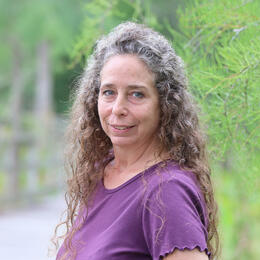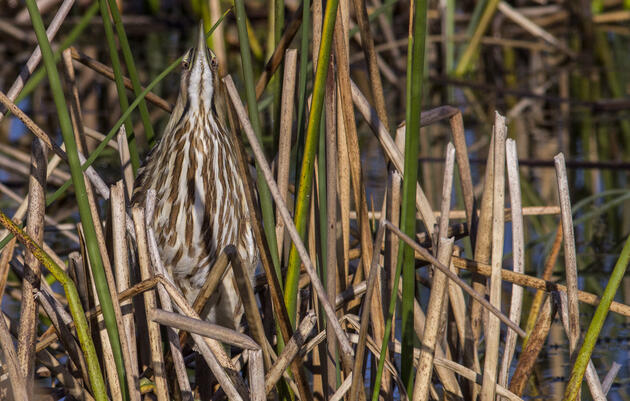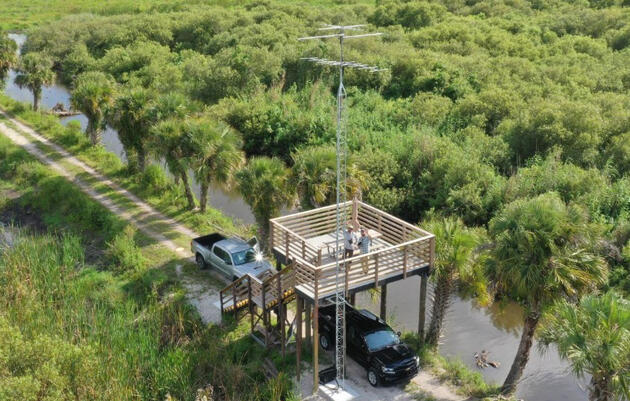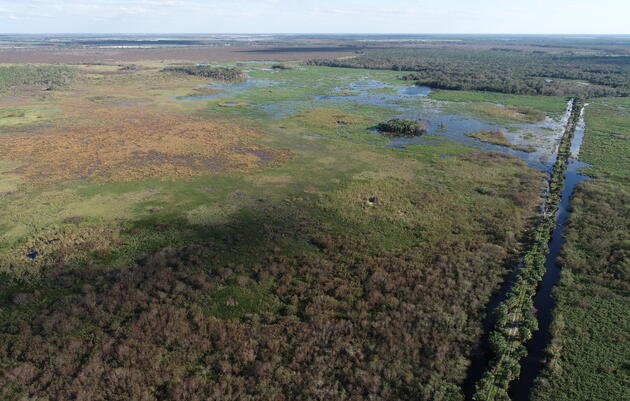Each winter, eagle-eyed visitors on the Corkscrew Swamp Sanctuary boardwalk spot American Bitterns hidden amidst alligator flags and sawgrass. Bitterns stand still, blending in with their environment, as they study the water for prey. While they commonly eat fish, crayfish, frogs, and other aquatic creatures, they also go after anoles, snakes, and even dragonflies. By April, American Bitterns embark on their journeys north for the summer breeding season.
Because bitterns are so secretive and face numerous challenges, scientists use modern technology to track their movements. GPS/GSM devices can provide real-time data on the bird’s whereabouts. GSM stands for Global System for Mobile Communications, which uses GPS (Global Positioning System) to collect data and send the information back to the researcher via the cellular network. This fall, one tagged bittern was tracked near Corkscrew Swamp Sanctuary.
Sam Merker, a postdoctoral researcher with the University of Connecticut, is using those trackers to learn more about American Bitterns. Listed as endangered in Connecticut, American Bitterns primarily breed in the northwestern corner of the state in locations including Kelly Swamp. These secretive herons nest in densely vegetated marshes and have experienced significant, range-wide population declines due to habitat loss and degradation. The species may also be shifting its breeding range northward in response to climate change.
Detailed knowledge of where and when a threatened species breeds can inform more effective conservation strategies, but scientists still know little about bitterns’ needs. Merker’s team has surveyed most freshwater marshes in Connecticut and tagged 11 male American Bitterns with GPS/GSM trackers over the past two years. Once new funding is secured, he plans to monitor nests and determine how many chicks are raised to adulthood to make statewide population estimates.
The bittern Merker tracked to a flooded farm field near the Sanctuary spent the breeding season in Connecticut before migrating to the east coast to Southwest Florida. But shortly after arrival, it stopped moving, indicating that the tracker either fell off the bird or the bird perished. Looking closely at the bird’s last known location, Merker determined that it was a few miles away from Corkscrew Swamp Sanctuary. He contacted Audubon staff with the location data and asked for help retrieving the device.
A few days later, Audubon obtained the landowner’s permission to access the property. With the farmer’s help, Research Technician Alex Meinders successfully located the tracker using a hand-held GPS device. It was, unfortunately, still attached to the now-deceased bird—the cause of death is unknown. Meinders returned the tracker to Merker for another study.
Merker says that, while some of the birds his team tagged spent their winters along the Eastern Seaboard, such as in New Jersey, Delaware, and Virginia before returning for breeding season, most of the birds that migrated to Florida did not make the return trip. More research is needed to determine why this is exactly, but Merker suspects it is because Florida has a larger suite of mid-size predators, like bobcats.
Though sad, knowing where and when a bird dies is critical information to better protect them into the future. Tracking technology unlocks the secret of American Bittern movement, and Corkscrew Swamp Sanctuary will continue to assist this valuable research whenever possible. Meanwhile, the Sanctuary’s conservation team continues to restore wetlands the bitterns need to successfully overwinter here before making the long journey back north to breed in the spring.








